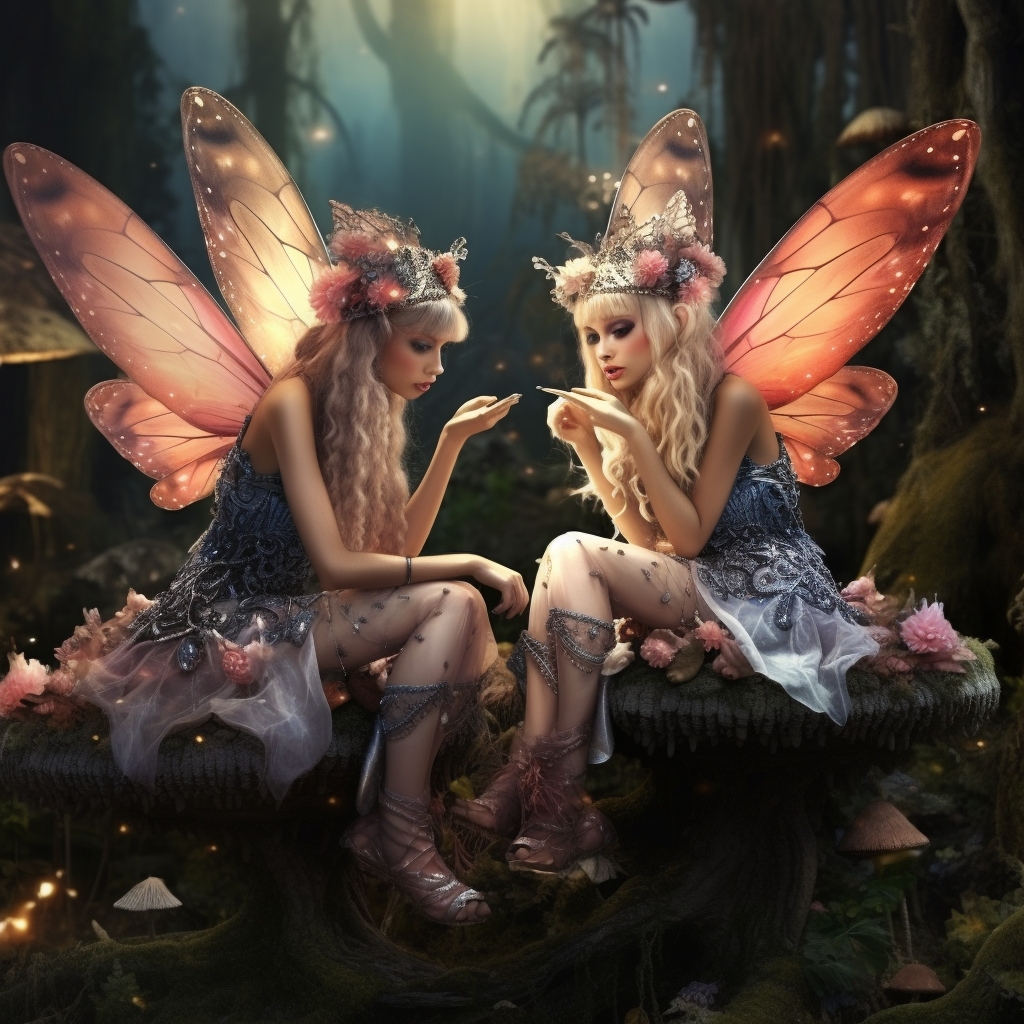Introduction
Whenever the word “fairies” is uttered, it stirs up images of small, whimsical beings with wings, flying around in a flurry of sparkling pixie dust. These magical creatures, embedded in countless folklore and mythology tales, have sparked human imagination with their enchanting ways. Let’s take a deeper dive into the captivating world of fairies, their historical roots, and their modern cultural significance.

The Historical Roots of Fairies
Tracing back to antiquity, the concept of fairies has been deeply ingrained in the collective human consciousness. Preceding Christianity, the term ‘fairy’ is derived from the Latin ‘fata’ and Old French ‘faerie’, both implying enchantment. This concept is not just confined to a particular culture but spans across Celtic, Germanic, Roman, Slavic, and Greek cultures, each presenting them as divine, supernatural beings.
In Celtic tradition, fairies were often deemed as a race of deities or supernatural beings inhabiting a realm separate from ours. These beings, far from the harmless pixie image of modern times, were a force to be reckoned with. Their actions, beneficial or malevolent, were believed to heavily influence human lives. Similarly, the Germanic counterpart, the ‘elf’, a synonym for fairy in English tradition, was considered a semi-divine entity often linked to health or fertility.

Fairy Types and Characteristics
The world of fairies is as diverse as it is magical, with various types of fairies each bearing unique characteristics. For instance, consider the industrious Brownies from Scottish folklore. These household fairies are known for their helpful nature, assisting with chores when the family is asleep. In stark contrast are the sprites, elemental creatures associated with either water or air, known for their playful, occasionally mischievous behavior.
Even within the realm of ominous fairies, we find creatures like the banshee from Irish folklore, known to foretell death with their mournful cries. It’s an intriguing fact that a banshee, despite its haunting reputation, is also considered a type of fairy.
In terms of physical appearance, the concept of fairies again spans a wide spectrum. While the prevalent image of a fairy is a small being with delicate wings, many folklore tales and myths depict them as human-sized beings capable of shape-shifting. Despite their variations, one thing is common amongst fairies: they all possess magical abilities and exhibit a deep connection with nature.
🧚♀️💫 Don’t just dream of magic, own a piece of it—click here now to explore an enchanting collection of hand-painted fairy figurines, and let their charm whisk you away to a realm of whimsy and wonder!

Fairies in Literature and Pop Culture
Literature has played a pivotal role in shaping our current perception of fairies. With Shakespeare’s “A Midsummer Night’s Dream”, the world was introduced to the powerful and playful fairies ruled by their king and queen, Oberon and Titania. These characters are starkly different from J.M. Barrie’s Tinker Bell from Peter Pan. This fairy, tiny and delicate, aligns with the image we commonly associate with fairies today.
Modern pop culture keeps the concept of fairies alive and varied in films, TV shows, and books. They often serve as symbols of magic, wonder, and an undying connection with the natural world. Disney fairies like Tinkerbell are universally loved, while the complex, darker depictions in modern fantasy, such as the “A Court of Thorns and Roses” series by Sarah J. Maas, bring an edge to the fairy narrative.

Fairies in Festivals and Traditions
Fairies also play a vital role in various festivals worldwide. The Fairy & Human Relations Congress, held annually in Washington, USA, is an event that fosters connections between humans and the denizens of the fairy realm. Similarly, Scotland, a land rich in fairy folklore, celebrates the Findhorn Fairy Festival each year, honoring the magic of nature and its spiritual inhabitants.
Many traditions, too, revolve around fairies. One such tradition includes leaving a small bowl of milk or cream as a friendly gesture to pacify or thank the fairies. Fairy rings, naturally occurring circles of mushrooms, are often believed to be gateways to the fairy realm or indicators of fairy dance locations.
Fairies and Environmental Awareness
In today’s world, fairies act as symbols of harmony with nature. Their stories often serve as allegories for environmental preservation. In fact, fairy folklore can be used to foster a sense of environmental stewardship in our society. By incorporating fairies into eco-education, we can instill a sense of wonder and responsibility towards nature, especially in the younger generation.
Conclusion
Fairies, with their history deeply entwined within our cultural tapestry, continue to fascinate us. They have evolved from the formidable supernatural beings of ancient folklore to the iconic symbols of magic, whimsy, and nature that we adore today. They inspire literature, art, festivals, and traditions, serving as a constant reminder of the enchanting world beyond our mundane lives.
While fairies might be mythical, the fascination they inspire is undoubtedly real. They invite us to embrace the magic of imagination, reminding us of the wonder and mystery concealed within the world around us. So, next time you stumble upon a peculiar mushroom circle in the woods or hear a rustling in the leaves, think of fairies. Perhaps, these mystical creatures are just a blink away, oscillating between their world and ours, spinning their enchanting tales.
With the magic of fairies, our world becomes a bit more mystical, a bit more magical, and undoubtedly, a lot more fascinating.
Experience the magic at your fingertips with Amazon’s stunning collection of handcrafted fairy figurines. Each one holds a spell of enchantment, ready to transform your home into a fairyland. Don’t just dream about magic, make it a reality –click here and let the fairy tale begin!